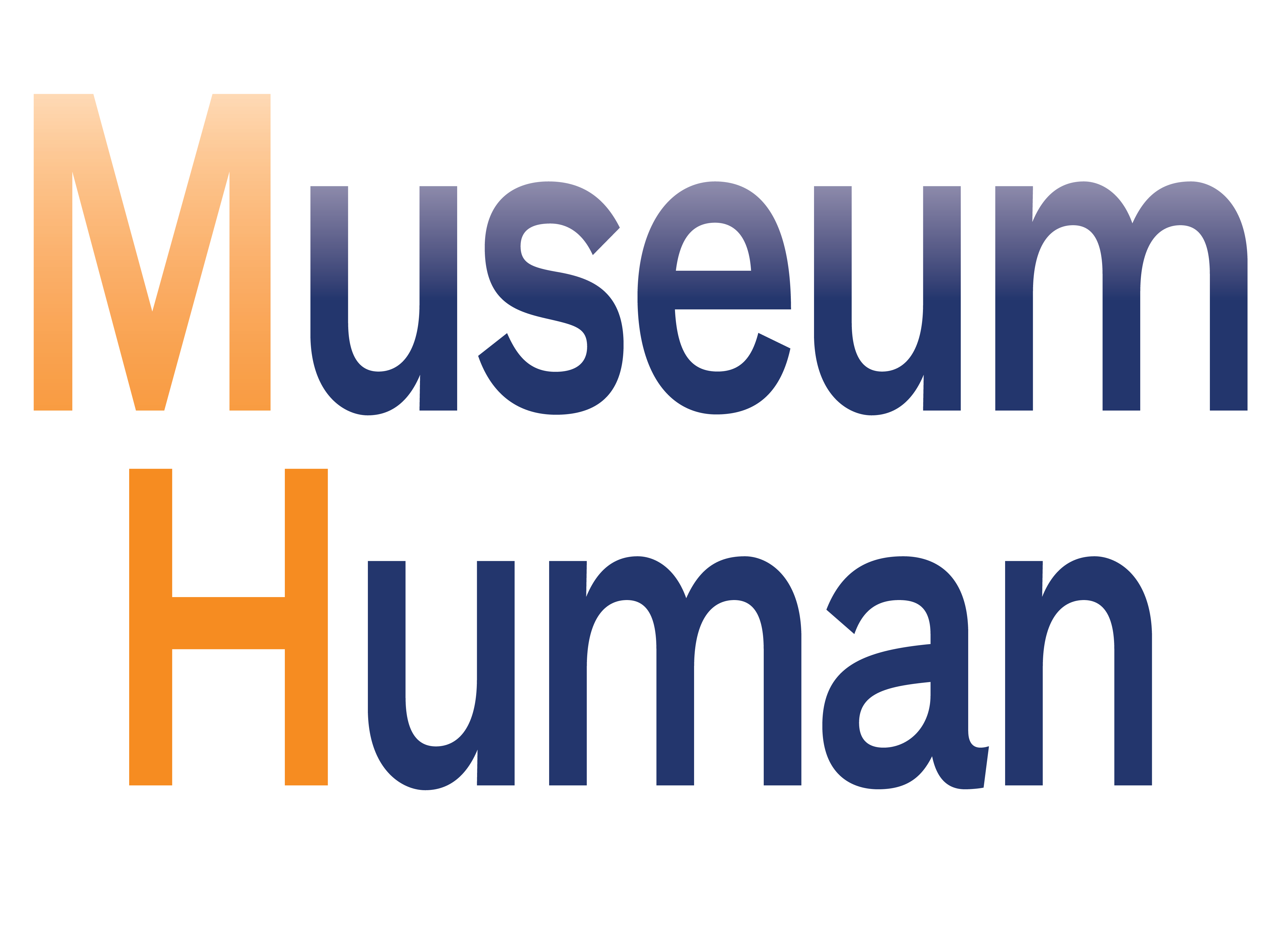
Workers are stressed, but the leadership radar is focused elsewhere.
If you're reading this and not a subscriber to Museum Human, consider scrolling to the bottom and signing up now—it's free and is the only way to read the site's longer weekly post on the organizational culture of cultural organizations and learn about special events and communities.
Organizations are spending a lot of time discussing worker stress—they're re-orienting senior positions, contracting with third parties, going deep into the mindfulness playbook, and saying all some of the right things.
The problem is so obvious that no one wants to point it out, a kind of collective Emperor's New Workplace. So let's check out some organizational takes on stress—starting with some of the causes of workplace stress, then hitting some articles that directly address it.
One: We'll start with Harvard Business Review on the idea of "human magic" supplanting the idea of "human resources" in organizations. For all the cheesiness of the name, the concept does match worker learning and purpose, which can have a profound effect on professional development. But are workers too cynical from years of neglect to take this C-suite rebranding this seriously?
Two: We continue with HBR on 11 workplace trends for 2022 and beyond. It's worth reading the whole thing—some are ominous ("Managerial tasks will be automated away, creating space for managers to build more human relationships with their employees."—do we really need more AI oversight?), but a few do seem aware. It should be noted, however, that all of them require more TMPR—Time, Money, People, and Resources—to succeed. For instance, while many of us in museum workplaces would support shortening the workweek (though we shouldn't ignore increasing pay), workloads have to decrease even more, less we end up with busier staff putting in more extra time.
Three: Inc., in a link provided by the American Alliance of Museum's Center for the Future of Museums, reminds us that the "Great Resignation" isn't just about pay. The article discusses research in an MIT Sloan Review article by Donald Sull, Charles Sull, and Ben Zweig, who conducted a massive data review that "the biggest predictor of employee resignations was a toxic culture." The article also cited, not surprisingly, "job insecurity and reorganization," and, counterintuitively, "high levels of innovation." The latter may surprise us, but one can accept that unevenly distributed innovation from one part of the org can impact many other areas that haven't been told about this change, had no input into it, or are considered backward and not worth worrying about. In museums, this often takes place in the relationship of "digital" to the rest of the org—which isn't to blame digital but museum org culture.
Four: Here's excitingly left-wing website Truthout on restaurant co-ops; a good reading for museum workers considering alternative models to the usual top-down museum. I've often thought that we need new museum models to try to get past the overwork mindset of current institutions, and the idea of a worker-owned museum is my favorite flight of imagination.
Five: Tsedal Neely, whose Remote Work Revolution was on a lot of Chief Human Resources Magic Officer bookshelves during the pandemic, was interviewed in HBR on how offices/workplaces are a tool, not the purpose of workplaces. I found her points surprisingly compelling, considering how comfortably mainstream her book seemed back in 2020. I liked this section of the interview:
I don’t think we’re going back to the old normal. Work has been disrupted. Workers have been saying that they’ve changed and they’ve experienced a completely different way of operating and productivity has not only remained high, but it’s gone up for many, many organizations. So I think we need to accept the fact that the world turned upside down and introduced a different way of working, and if we don’t embrace and accept and adapt, we are going to be not only behind today. …
When I talk to companies, next to worrying about, “Our culture, our culture, what about our culture?”, employee engagement is probably right there as what people worry about. So we have to make sure that we decouple the notion that employee engagement only happens when we are in person. That is absolutely not true. Employee engagement is about having a great manager who’s creating the conditions for people to develop cohesion as groups and work. So you need the frequency of contact. You need the informal contact, like the virtual experiences with others that are important. You need to make sure that people have terrific jobs that they’re proud of, that they’re connecting to, including higher purposes.
Could some of that include jobs that aren't overstuffed with the stress of deliverables, especially mission-driven ones? Purposefulness, it should be noted, can be exploited by employers. Why is stress an automatic byproduct of purpose?
Six: This isn't just about hybrid work, but like the HBR interview with Tsedal Neeley, this Business Insider article describes how workers have changed but org structures and values have not. (I've been at a museum long enough to agree. They're too often still machines that ingest art and money and create collections and exhibitions, but workers have changed—our lives, our energy, our fears and anxieties, our stresses, our outlooks, and our values.) I found this appealing:
Managers should look for opportunities to grant capable employees more flexibility and autonomy. A 2017 study by the University of Birmingham found that employees with higher levels of autonomy over their work tasks and schedules reported greater job satisfaction and well-being.
And also this:
… leaders need to demonstrate their personal commitment to building a more empathetic and purpose-driven corporate culture. Don't presume you already know your employees' concerns and priorities; ask for feedback and then take action to alleviate work and life stressors.
Employees are moving away from "living to work" as their guiding ethos and embracing "working to live." They want to feel connected at work and valued by their organizations in ways that transcend salary. Like my friend, these workers want employers that encourage greater balance between their jobs and their home lives, not ones that try to entice them to sacrifice the latter for a bigger payday. More workers are feeling empowered to leave, whether in body or in spirit, if companies are unwilling to meet those needs.
I still wonder if that idea of "balance" comes down to less work.
Seven: With offices already preparing for the post-Omicron "new normal," here's Quartz from April 2021 about calming stresses—note, these are super-individualized points that don't address structural problems, and also assume a privilege of being comfortable with US-health-system-organized therapy as well as speaking out about one's struggles.
Eight: Sticking with Quartz, here's a different piece on how some workers want to be stressed and too busy. Perhaps these people are business leaders and managers? The article cites this study that stated that there might be just an optimal amount of busy.
Nine: We end with some articles directly about stress. I came across this research from Stanford on embracing rather than avoiding stress. It's making the rounds in articles that push the "get back to work" propaganda:
So should we just tell ourselves that stress is good for us?
In the course of researching the book and leading my own stress mindset interventions, I’ve discovered that the most helpful mindset toward stress goes beyond a generally positive attitude toward stress. The three most protective beliefs about stress are: 1) to view your body’s stress response as helpful, not debilitating – for example, to view stress as energy you can use; 2) to view yourself as able to handle, and even learn and grow from, the stress in your life; and 3) to view stress as something that everyone deals with, and not something that proves how uniquely screwed up you or your life is.
The emerging science on stress mindsets shows that it is possible to change all of these attitudes, even if we are used to thinking of stress as harmful. For example, when you feel your heart pounding from anxiety, you think about how your body is trying to give you the energy you need to rise to the challenge. More importantly, changing any one of these attitudes can help you thrive in the face of ordinary stress as well as chronic or even traumatic stress.
Good grief—the positives of a pounding heart!
Ten: Both the New York Times and a Quartz member newsletter used the expression "make stress work for you." While I can support advice like this:
During prolonged periods of high-volume pressure, find moments to reconnect with why your struggle matters. When you’re, say, dealing with a confluence of tough circumstances or or pushing toward a goal that calls for months of physical or emotional challenges, it’s easy to lose sight of the importance attached to the source of your hardship from under the volume of stress it’s creating, Jensen explains. You’re “just focused on one foot in front of the other until you kind of hit that point where you ask, ‘Why am I even doing this?’”
and:
In “peak pressure” moments, remember what’s not at stake. During acute moments of pressure—public speaking events, big games, the moments you face a tough decision with little time to spare—focusing on the importance of what you’re doing can be crippling. In those often highly uncertain moments, says Jensen, “We do not need to be consciously thinking, ‘Oh my god this really matters to me,’ because it’s like, no crap this really matters to you!”
I'm not in favor of any "make stress work for you" advice. I do agree that you should remember why you struggle—or, what you're hoping to accomplish. However, I think we need to address the structural causes of this stress before resorting to what I'll call "traumahacking." For some positive reinforcement, check out Reddit's antiwork subreddit.
Enjoy, if you aren't too busy making the most of your stress!
If you're reading this and not a subscriber to Museum Human, consider signing up for a free subscription below—it's the only way to read the site's longer weekly post on the organizational culture of cultural organizations and to learn about upcoming special events and member communities. Thank you for reading!
cover image by Matthew Henry / Unsplash [description: a pug wrapped in a blanket on a bed cover]

Links of the Week: January 28, 2022: Stress Test by Robert J Weisberg is licensed under a Creative Commons Attribution-NonCommercial-ShareAlike 4.0 International License.






